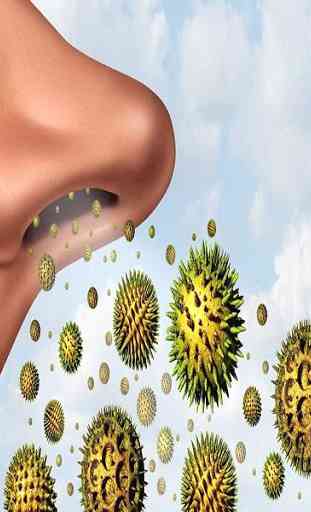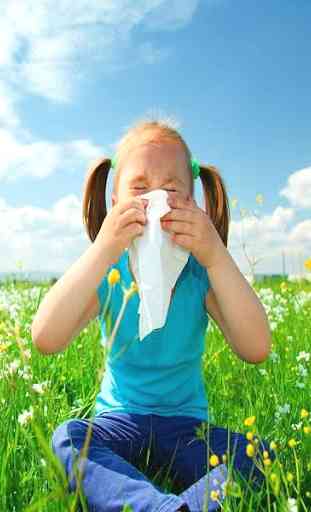Seasonal Allergies
Seasonal allergies, sometimes called "hay fever" or seasonal allergic rhinitis, are allergy symptoms that happen during certain times of the year, usually when outdoor molds release their spores, and trees, grasses, and weeds release tiny pollen particles into the air to fertilize other plants.
The immune systems of people who are allergic to mold spores or pollen treat these particles (called allergens) as invaders and release chemicals, including histamine, into the bloodstream to defend against them. It's the release of these chemicals that causes allergy symptoms.
People can be allergic to one or more types of pollen or mold. The type someone is allergic to determines when symptoms happen. For example, in the mid-Atlantic states, tree pollination is February through May, grass pollen runs from May through June, and weed pollen is from August through October — so kids with these allergies are likely to have increased symptoms at those times. Mold spores tend to peak midsummer through the fall, depending on location.
Even kids who have never had seasonal allergies in years past can develop them. Seasonal allergies can start at almost any age, though they usually develop by the time someone is 10 years old and reach their peak in the early twenties, with symptoms often disappearing later in adulthood.
Seasonal allergies examples: Spring Allergies, Summer Allergies, Fall Allergies, Winter Allergies, Hay Fever, Pollen Allergies, Mold Allergy, Dust Allergy, Dog Allergy, Cat Allergy, allergy and asthma and allergic reaction rash.
Seasonal allergies App Features:
• What is Seasonal Allergies?
• Seasonal Allergies Symptoms.
• How to Control Your Seasonal Allergies.
• Natural Seasonal Allergy Home Remedies.
• Seasonal Allergies Causes.
• Seasonal Allergies Diagnosis.
• Seasonal Allergies Treatment.
The immune systems of people who are allergic to mold spores or pollen treat these particles (called allergens) as invaders and release chemicals, including histamine, into the bloodstream to defend against them. It's the release of these chemicals that causes allergy symptoms.
People can be allergic to one or more types of pollen or mold. The type someone is allergic to determines when symptoms happen. For example, in the mid-Atlantic states, tree pollination is February through May, grass pollen runs from May through June, and weed pollen is from August through October — so kids with these allergies are likely to have increased symptoms at those times. Mold spores tend to peak midsummer through the fall, depending on location.
Even kids who have never had seasonal allergies in years past can develop them. Seasonal allergies can start at almost any age, though they usually develop by the time someone is 10 years old and reach their peak in the early twenties, with symptoms often disappearing later in adulthood.
Seasonal allergies examples: Spring Allergies, Summer Allergies, Fall Allergies, Winter Allergies, Hay Fever, Pollen Allergies, Mold Allergy, Dust Allergy, Dog Allergy, Cat Allergy, allergy and asthma and allergic reaction rash.
Seasonal allergies App Features:
• What is Seasonal Allergies?
• Seasonal Allergies Symptoms.
• How to Control Your Seasonal Allergies.
• Natural Seasonal Allergy Home Remedies.
• Seasonal Allergies Causes.
• Seasonal Allergies Diagnosis.
• Seasonal Allergies Treatment.
Category : Health & Fitness

Related searches


